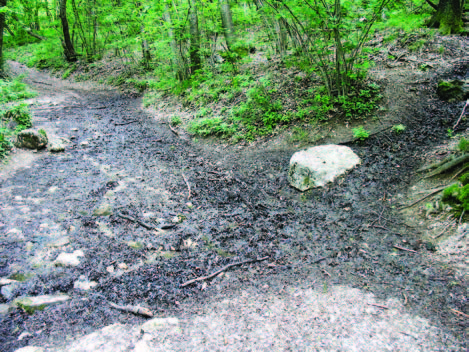Fifty Years of the Hypotelminorheic: What Have We Learned?
DOI:
https://doi.org/10.3986/ac.v41i2-3.564Povzetek
Originally described by Meštrov in 1962, hypotelminorheic habitats are superficial subterranean drainages, typically less than a meter or so in depth, that emerge at small seepage springs. These are persistent wet spots, typically with blackened leaves in small depressions. There may be no flow during dry periods, but the underlying clay retains water above. They share the landscape with other small bodies of water (močila in Slovenian), not necessarily connected with groundwater. Hypotelminorheic habitats (mezišča in Slovenian) usually harbor a fauna dominated by species adapted to subterranean life, characteristically without eyes or pigment. The basic chemistry and hydrology of the habitat is described as are the basic faunal elements. The habitat is placed in a more general context by reviewing how species invade the habitat, their morphology, and their possible connection to deeper subterranean habitats.Prenosi
Podatki o prenosih še niso na voljo.

Prenosi
Objavljeno
2012-12-15
Kako citirati
Pipan, T., Fišer, C., Novak, T., & Culver, D. C. (2012). Fifty Years of the Hypotelminorheic: What Have We Learned?. Acta Carsologica, 41(2-3). https://doi.org/10.3986/ac.v41i2-3.564
Številka
Rubrike
Original papers
Licenca
Avtorji jamčijo, da je delo njihova avtorska stvaritev, da v njem niso kršene avtorske pravice tretjih oseb ali kake druge pravice. V primeru zahtevkov tretjih oseb se avtorji zavezujejo, da bodo varovali interese založnika ter da bodo povrnili morebitno škodo.
Podrobneje v rubriki: Prispevki




